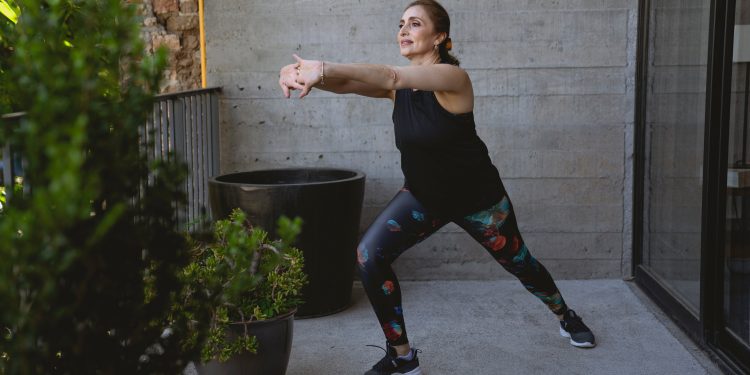Keeping blood circulation at its best is essential for general health and well-being. Among the many problems caused by poor circulation are weariness, tingling, and numbness. On the other hand, adding a few easy exercises to your regular regimen can greatly improve blood flow. This article will explore easy and effective tips for boosting blood circulation in your body and promoting better health and vitality.
Table of Contents
Stay Active Throughout the Day
It would help if you incorporated regular exercise into your daily routine to promote improved blood circulation. Exercises that increase heart rate, like cycling, jogging, or brisk walking, are beneficial for improving circulation in general. If your work involves extended periods of sitting, make a deliberate effort to stand, stretch, and take short walks at regular intervals throughout the day. These movements not only prevent the stagnation of blood flow but also contribute to maintaining optimal health. Consider incorporating simple exercises, like desk stretches or quick workouts, to invigorate your body and counteract the passive nature of desk-bound tasks. Making physical activity a priority improves circulation, energy levels, and general well-being.
Elevate Your Legs
Implementing the practice of elevating your legs provides a straightforward and effective means of aiding blood circulation, particularly for individuals who spend extended periods sitting or standing. When feasible, take the opportunity to prop your legs up on a stool or chair, creating a gentle incline. This straightforward elevation encourages the blood to return to the heart more effectively, potentially reducing edema and improving circulation in the lower limbs. Elevating your legs intermittently throughout the day can be easily incorporated into your work routine, contributing to overall vascular health. This practice is especially valuable for individuals with jobs that involve prolonged sitting or standing, offering a proactive measure to counteract the challenges posed by extended periods of immobility. Making leg elevation a consistent part of your routine can be a beneficial habit for promoting optimal blood circulation and minimizing discomfort associated with circulatory issues.
Stay Hydrated
Prioritizing adequate hydration is fundamental for sustaining healthy blood viscosity and optimizing overall circulatory function. Dehydration can contribute to an increase in blood thickness, posing challenges for the circulatory system in effectively transporting oxygen and essential nutrients. To counteract this, make a conscious effort to consume an ample amount of water throughout the day, supporting optimal blood flow and promoting the efficient delivery of nutrients to various parts of the body. Establishing a regular water-drinking routine can be beneficial, whether through scheduled breaks or by keeping a water bottle at your workstation. Consuming meals high in water content, such as fruits and vegetables, also helps you stay hydrated overall and maintains the health of your circulatory system. Maintaining proper hydration not only aids blood circulation but also enhances overall bodily functions, fostering a health-conscious approach to well-being in the workplace.
Incorporate Foods that Support Circulation
Strategic dietary choices play a significant role in promoting optimal blood circulation. Eating foods high in omega-3 fatty acids, such as flaxseeds and fatty fish (salmon, mackerel), improves blood vessel health by increasing blood vessel flexibility and function. Garlic, known for its natural anti-inflammatory properties, and ginger, with its circulation-boosting effects, can be valuable additions to your diet. Dark chocolate, consumed in moderation, has been associated with improved blood vessel dilation, positively influencing overall circulation. A healthy intake of vitamins and antioxidants is ensured when you include a range of fruits and vegetables in your meals, which supports vascular health. Adopting a balanced and nutrient-dense diet not only nourishes your body but also aids in maintaining an efficient circulatory system, fostering overall well-being.
Compression Socks for Blood Circulation
Exploring the use of compression socks can significantly contribute to maintaining optimal blood circulation, particularly for women. By gently applying pressure to the legs, these carefully made socks increase blood flow, lessen discomfort and swelling, and promote blood flow. Compression socks are especially useful for prolonged periods of inactivity, such as long workplace hours or travel. These socks can provide additional support and alleviation for ladies who have special health issues or circulatory concerns. When choosing compression socks for women, it’s essential to choose the ones that cater to women’s specific needs, considering factors like size, compression level, and comfort. By incorporating compression socks into your routine, you can proactively support your circulatory health, especially in situations where prolonged sitting or standing is unavoidable.
Conclusion:
Making blood circulation a priority is essential to preserving general health. By incorporating these easy tips into your daily routine—staying active, elevating your legs, staying hydrated, incorporating circulation-friendly foods, and considering compression socks—you can actively support and enhance blood flow throughout your body. These simple practices contribute to improved vitality, reduced discomfort, and better long-term health.


 Home
Home










